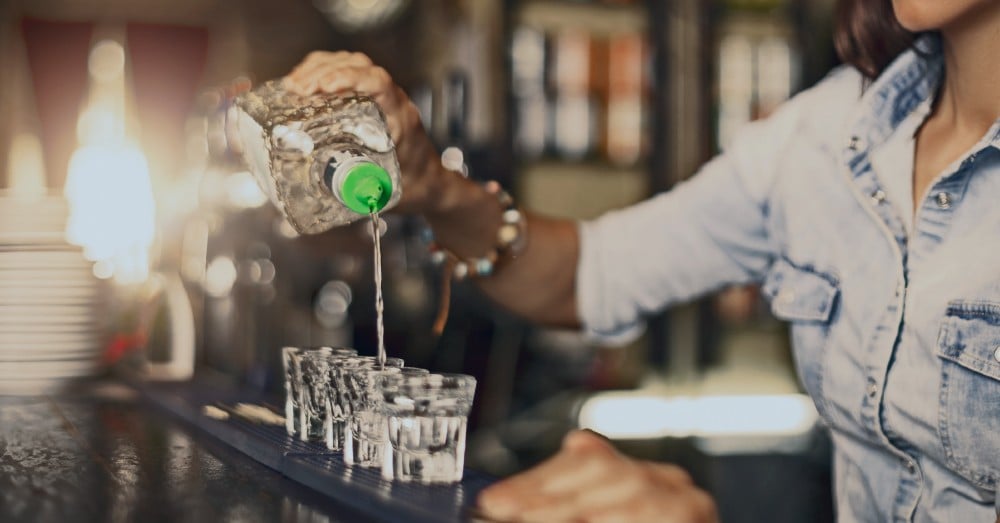Understanding your costs is vital for making informed business decisions. When it comes to owning or managing a bar, it’s likely you know just how important successful bar inventory systems and processes are for the profitability of your business.
A key metric that will help your bar gain true visibility into business costs, and help you determine the profitability of your liquor inventory and how to set prices is your pour cost percentage.
Yet many bar owners ask the same question - “what should my pour cost be?”
In this blog we are going to explain what pour cost percentage actually is, how to calculate pour cost percentage, why it’s important for your business and why there’s no industry standard when it comes to pour cost percentage.
What is pour cost percentage?
Your bar’s pour cost is the percentage of costs that your drinks cost compared to your bar’s resulting sales from those products. It is a way of measuring your gross profit margin on your bar’s products and goods.
For example, if your bar’s pour cost is 20 percent for all of its beer, liquor and wine, then your business has made 80 percent in gross profit from all of the alcohol that your bar has sold.
The same pour cost calculation can be applied to each individual drink, brand of liquor, or category, to measure how much you make from every item in your POS – and, when done correctly, you can also identify where you may be losing money due to shrinkage (or variance). We will touch on this later on in the “why is pour cost important?” section of the blog.
How to calculate pour cost percentage
Calculating your pour cost is done as part of your periodic inventory counts, which could be performed weekly, monthly, quarterly or yearly. While most bars do this monthly, we recommend weekly as it gives you more timely information on how your bar is performing and so that you can identify any problems right away.
While pour cost relies on effective bar inventory counts and point-of-sale (POS) system sales data, the actual calculation is fairly straightforward.
To calculate pour costs for each individual product, you just need to use one simple calculation:
(Wholesale price of the product / retail price) x 100 = pour cost percentage
The most important aspect of this calculation is to figure out the wholesale cost and retail price for a specific quantity. For example, if a bottle of Budweiser costs $1 and you sell it for $4, then your pour cost is $1 ÷ $4 = .25 and .25 x 100 = 25%
To figure out pour cost for your entire bar’s inventory you can use this calculation:
(Beginning inventory + purchases - ending inventory) ÷ monthly bar sales x 100
Why is pour cost important?
Pour cost is an important metric, because once you know your actual pour cost you can then use it to create your ideal pour cost (also known as theoretical pour cost). An ideal pour cost will tell you what is a good pour cost for this period. There are a huge number of variables that will impact your ideal pour cost, mainly your product mix, but also including spills, comps, specials and more, so your ideal pour cost will be different than any other establishment – and will even change from one day or week or month to the next depending on what your guests are buying.
Once you know your ideal pour cost, you can compare this to your actual pour cost to gain visibility into where your business is losing money from shrinkage (also known as variance). For example, perhaps your pour cost for Grey Goose Vodka is much higher than the ideal pour cost for Grey Goose - this would suggest there’s over pouring (or theft) on Grey Goose.
You can use this data to educate your employees where your business is losing money, creating a plan to prevent that from happening moving forward.
What is a good pour cost?
While here at Sculpture Hospitality we get this question a lot, there’s really no such thing as a good pour cost that every bar should aim for. The best pour cost depends on your sales mix, pricing, and costs and will change all the time.
As we discussed in the previous section of this blog, there’s no standard pour cost for all bars.
For example, a nightclub needs to run a significantly lower pour cost percentage than a sports bar because a nightclub may only be open for a few hours four times a week, where a bar is open all day every day. A nightclub has to make all of their profits in a very small time frame so they need to charge higher prices than a sports bar in order to be profitable.
Your ideal pour cost percentage is truly unique to your own establishment. To understand the profitability of your bar and where you may be experiencing variance, it’s crucial that you understand both your pour cost and your ideal pour cost.
Need help understanding your bar’s pour cost and how it’s impacting your overall profitability? Sculpture Hospitality has developed an innovative bar inventory system that gives you true visibility into costs and profitability. When combined with expert advice from our team of specialists, Sculpture Hospitality can help you find the ideal pour cost that works for your bar. Contact us today to learn more.





.png)





